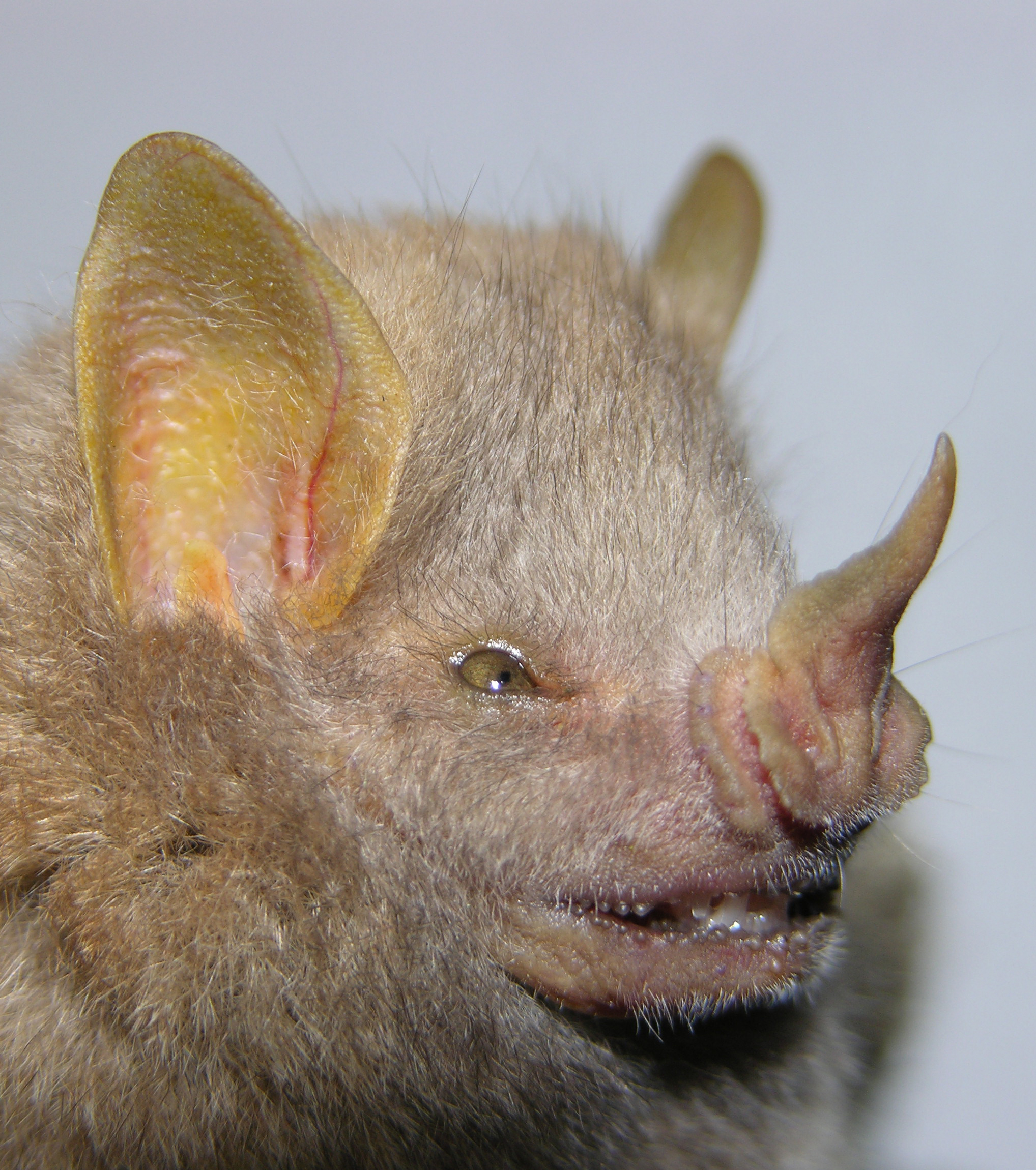Guide to the bats of Montserrat
Artibeus jamaicensis Chiroderma improvisum Brachyphylla cavernarum Noctilio leporinus Ardops nichollsi Sturnira thomasi Monophyllus plethodon Molossus molossus Tadarida brasiliensis Natalus stramineus Key to Roosts Key to Taxa
(Photo G. Kwiecinski)
Note white patches of fur
on the shoulder.
(source: faune-guadeloupe.com)Tree Bat - Ardops nichollsi
STATUS: This bat is found only in the northern Lesser Antilles and is relatively common, having been found on Montserrat, nevis, St. Kitts, Saba, and Statia. This bat has been mist-netted in rain forest, dry scrubby forest as well as in banana plantations, cacao groves, and botanical gardens.IDENTIFICATION: Tree bats are medium-sized bats with a wingspan just over 30 cm. The short snout ends in a "noseleaf" in the form of a fleshy "spike" above and between the nostrils. A white spot of fur is typically found on the shoulder at the base of the neck. The tree bat usually has a brown fur, although the long fur is paler below the tips on the back and paler at the tips on the underside. The narrow tail membrane is quite furry, and in conjunction with the very short snout on these bats, they have the appearance of a very furry teddy-bear. The rims of each ear are noticeably yellow-colored. The eyes are a pale bronze-brown which makes the pupil quite obvious.
ROOSTS: This bat has only been found hanging in the branches/foliage of trees, either in pairs or in very small groups. Tree bats shift among roost trees to reduce their commute time between active feeding sites as the season progresses. By moving around, these bats may also defeat potential predators from learning where they are resting during the day. Tree bats feed on small fruits and have been noted mobbing fig trees in large numbers (50-70 bats). Their droppings are similar in appearance to those of other leaf-nosed bats (Artibeus, Brachyphylla) but accumulations of droppings are rare due to their roost-switching behavior. These bats may have some minor impact on cultivated fruit production, but are also important seed dispersers and pollinators of these same crops.
REPRODUCTION: Pregnant females have been found in March, April, and July, and nursing mothers have been found in April and June. This suggests a similar pattern to many leaf-nosed bats that give birth at two times during the year to coincide with the rains/food availability.
SIZE: Forearm length - 51mm [range 43-52mm]; Mass - 28g [range 15-33g]; Wingspan - approx 380mm; head+body length - 69-72 mm. Female tree bats are generally larger than males.
COMMENTS:
REFERENCE: Mammalian Species No. 24: Ardops nichollsi by J. Knox Jones, Jr. & Hugh H. Genoways. (American Society of Mammalogists, 1973)
See Entry: Walker's Mammals of the World Online version 5.1, by Ronald Nowak, 1997

